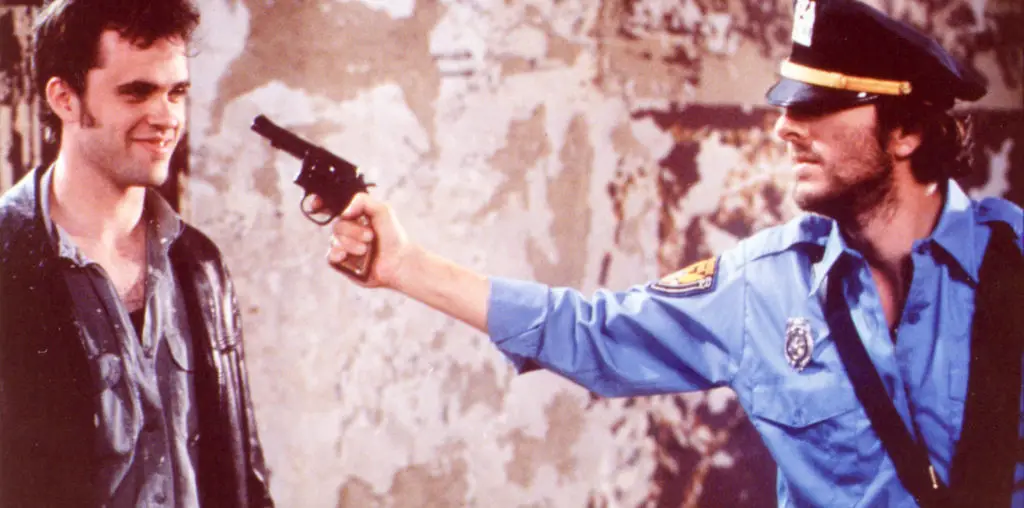
You’ll have to watch this one to the end to find out why it’s called “Loofa.” Fortunately, at just over an hour, your viewing experience will be relatively painless, if somewhat short of inspiring. That’s because “Loofa” exists in defiance of recently passed legislation outlawing the making of independent films about the making of independent films. Okay, so there is no such legislation, but don’t you think there ought to be? “Loofa” even trumpets its proud lineage in publicity materials, declaring itself a cross between “Living in Oblivion” and “…And God Spoke.” As if the world were crying out for such a thing. On the one hand, it’s a perfectly natural impulse for struggling filmmakers to “write what they know”, but unless there’s a fresh spin to be put on the material, it’s an impulse to resist at all costs.
“Loofa” isn’t particularly fresh, but it is amiable enough and there are a few genuine belly laughs to be had. The (fictional) aspiring filmmakers here are Ray and Jerry, who have decided to document the process of making their first movie with a video diary. All of the action takes place inside a dance club managed by Ray’s girlfriend, who has allowed them to use the location on the condition that they don’t drink all the booze. Obviously, she’s never spent much time around a film crew, and that edict is the first one to fall, particularly after Ray calls in his alcoholic writer buddy to critique the screenplay.
What follows often plays like a comedy sketch extended far beyond its natural limits. Ray and Jerry audition actors (their lead is psychotically obsessed with his own hair), deal with creative issues (whether or not to feature nudity) and struggle with technical matters (such as a tempermental French cameraman). Most of the scenes start with the germ of a funny idea, then drive it into the ground. A classic example is the continued mispronunciation of Jerry’s last name (it’s spelled “Buttcraque,” but it’s pronounced “Boo-kray.”) A better sense of comic timing – both from the actors and in the editing room – would have been a great help. And yet, the leads are likeable enough, and the occasionally inspired bits of humor (Ray reacts to Jerry’s script idea of a giant foot in the forest by suggesting a giant sock instead) make “Loofa” hard to dislike. Let it serve instead as a cautionary tale for aspiring filmmakers everywhere. The lesson is, skip the ‘making of an indie film’ comedy and go straight to your second feature instead.
